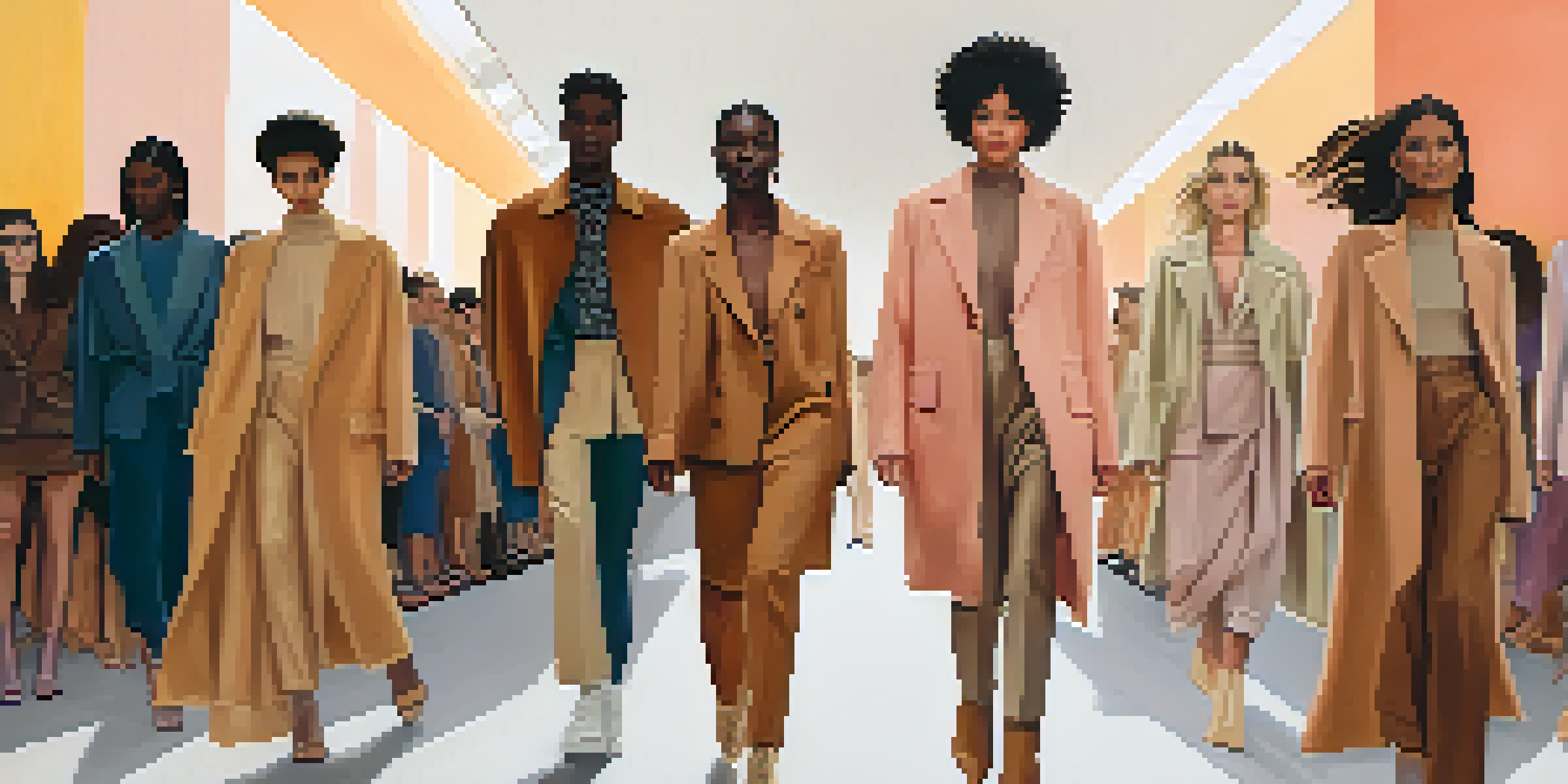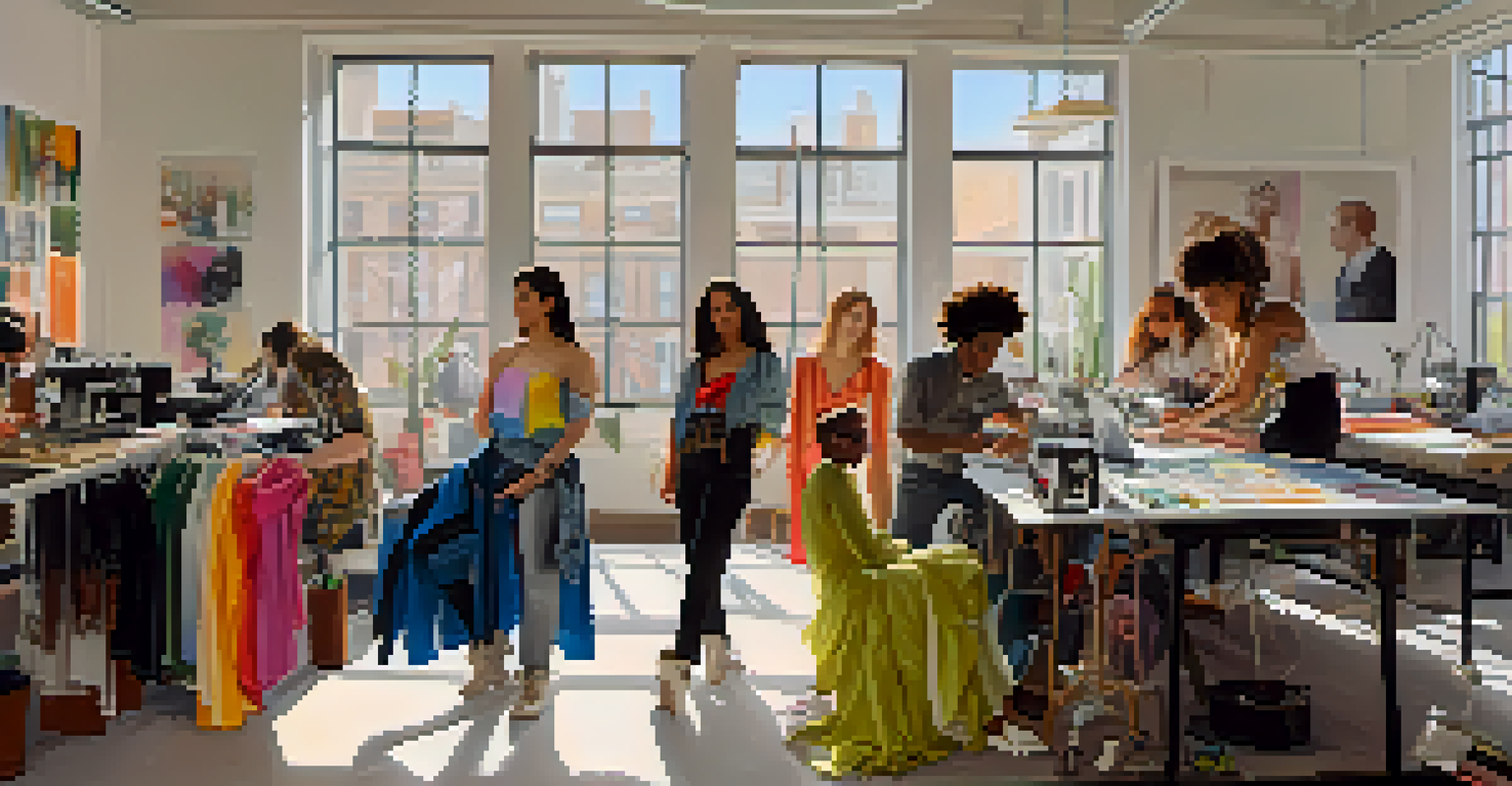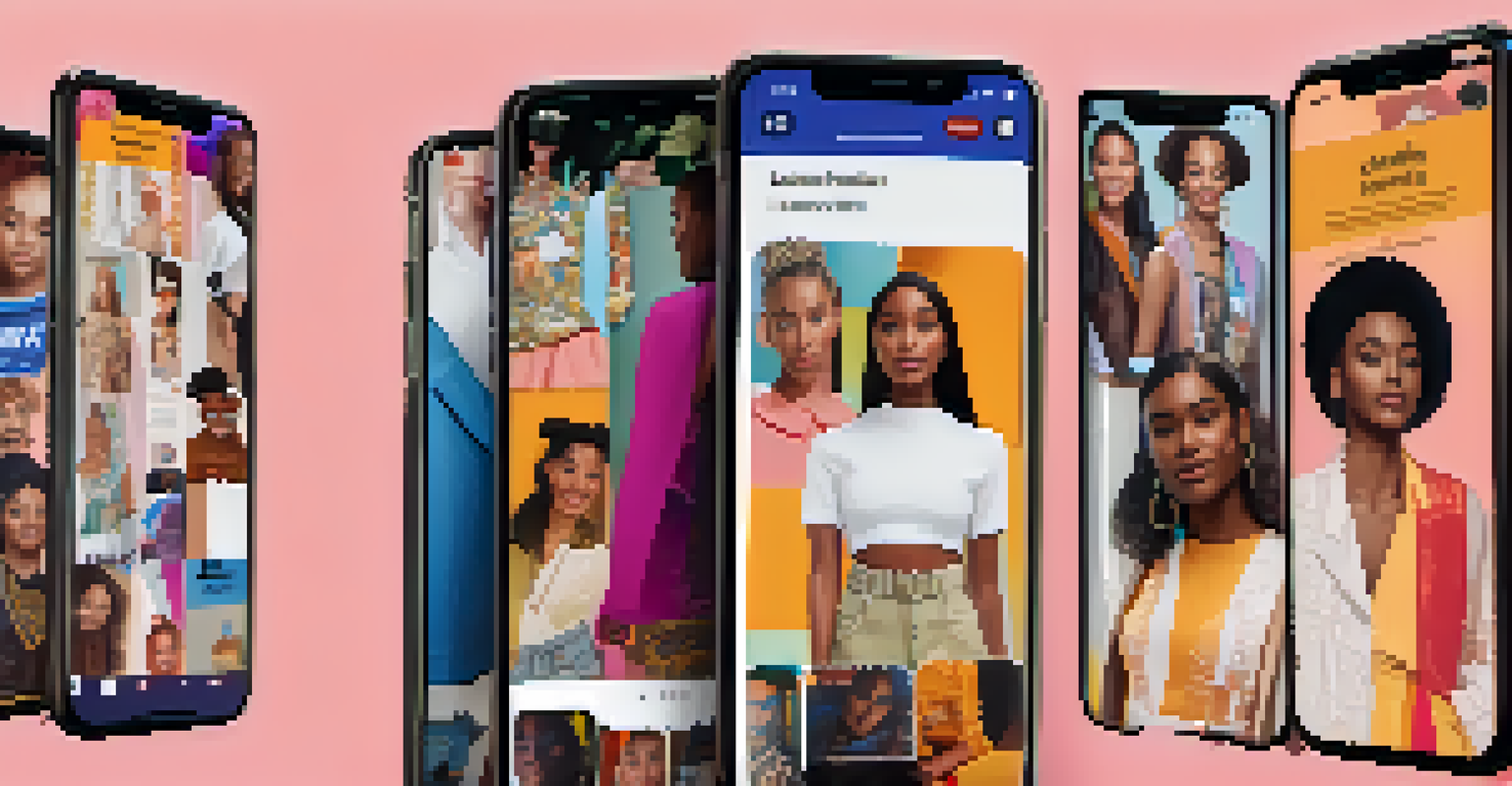Fashion Industry's Response to Gender Representation Criticism

Understanding the Criticism of Gender Representation
The fashion industry has faced significant criticism regarding its portrayal of gender. Many argue that traditional representations often reinforce stereotypes and fail to reflect the diversity of gender identities. This lack of representation can alienate consumers who do not see themselves reflected in the media and fashion campaigns.
Fashion is the armor to survive the reality of everyday life.
From runway shows to advertisements, the industry has historically favored narrow definitions of beauty and gender. This has led to a push from consumers and advocates for more inclusive and diverse representations. Understanding these criticisms is crucial as the industry seeks to adapt and evolve.
Furthermore, the conversation around gender representation is not just about inclusion but also about authenticity. Brands must navigate the fine line between tokenism and genuine representation, ensuring that their efforts resonate with audiences on a deeper level.
The Rise of Gender-Neutral Fashion
In response to criticism, many brands are now embracing gender-neutral fashion lines. These collections aim to break down traditional gender norms, offering clothing that can be worn by anyone, regardless of their gender identity. This shift reflects a broader cultural movement towards inclusivity and acceptance.

Some notable brands have led the way by launching unisex collections that challenge the conventional silhouettes and styles associated with gendered clothing. For instance, popular retailers have introduced relaxed fits and neutral palettes that appeal to a wider audience. This not only enhances accessibility but also promotes self-expression.
Fashion Embraces Gender Neutrality
Many brands are now launching gender-neutral fashion lines to promote inclusivity and challenge traditional gender norms.
The rise of gender-neutral fashion signifies a shift in consumer expectations as well. Shoppers are increasingly looking for brands that align with their values, pushing the industry to prioritize inclusivity over outdated norms.
Influence of Social Media on Gender Representation
Social media has transformed the way the fashion industry communicates with its audience, allowing for a more diverse range of voices to be heard. Platforms like Instagram and TikTok have empowered individuals to challenge traditional beauty standards and share their unique styles. This democratization of fashion has led to a demand for more authentic representation.
Diversity is being invited to the party; inclusion is being asked to dance.
Influencers from various backgrounds are using their platforms to advocate for gender inclusivity, showcasing a wide spectrum of identities and expressions. The impact is palpable, as brands are increasingly collaborating with these influencers to reach new audiences and reflect their values.
As a result, social media has become a powerful tool for holding brands accountable. Consumers are now quick to call out companies that fail to represent diverse gender identities, making it clear that inclusivity is no longer optional in the fashion landscape.
Brands Leading the Charge for Change
Several fashion brands have taken proactive steps towards improving gender representation, setting a standard for the industry. For example, brands like Telfar and Palomo Spain have gained acclaim for their gender-fluid designs that celebrate individuality. These companies have embraced inclusivity as a core part of their identities.
Additionally, high-profile collaborations and campaigns are emerging that highlight diverse gender representation. By featuring models and influencers of varying gender identities, these brands are not only promoting their products but also fostering a sense of belonging among consumers.
Social Media Drives Authenticity
Platforms like Instagram and TikTok empower diverse voices, pushing brands to adopt more authentic representations of gender.
Such initiatives demonstrate that the fashion industry can be a platform for change, inspiring other brands to follow suit. The ripple effect of these efforts is encouraging a more inclusive environment across the board.
The Role of Education in Promoting Inclusivity
Education plays a crucial role in promoting inclusivity within the fashion industry. Many institutions are now incorporating discussions about gender representation and diversity into their curricula. This helps foster a new generation of designers and industry professionals who understand the importance of inclusive practices.
Workshops and seminars aimed at raising awareness about gender issues are becoming more common. These initiatives encourage students and professionals alike to reflect on their biases and consider the impact of their design choices. By emphasizing education, the industry can cultivate a more informed workforce.
Moreover, industry leaders are increasingly advocating for mentorship programs that connect aspiring designers with established professionals. This not only enhances diversity in talent but also reinforces the value of inclusivity in fashion.
Consumer Demand for Authentic Representation
Today's consumers are more vocal than ever about their expectations for authenticity and representation in fashion. As a result, brands are recognizing the need to align their practices with the values of their audiences. This shift is not just a trend; it's a fundamental change in how fashion is marketed.
Market research indicates that consumers are more likely to support brands that prioritize inclusivity and diversity. This has prompted many companies to rethink their marketing strategies, ensuring that they reflect a broader spectrum of gender identities in their campaigns.
Consumer Demand Shapes Brand Values
Today's consumers expect brands to reflect their values on inclusivity and diversity, leading to a significant shift in marketing strategies.
Ultimately, this demand for authenticity means that brands must actively listen to their consumers. Engaging in open dialogues about gender representation can foster loyalty and trust, paving the way for long-term success.
Challenges Still Facing the Fashion Industry
Despite the progress made, the fashion industry still faces numerous challenges in achieving true gender representation. Many brands struggle with balancing commercial interests and authentic representation, often leading to accusations of tokenism. This can undermine the genuine efforts of those trying to effect change.
Additionally, there remains a lack of representation behind the scenes, with many design and leadership roles still dominated by specific demographics. This can hinder the development of inclusive practices, as those in power may not fully understand the needs and desires of diverse consumers.

Addressing these challenges requires ongoing commitment and a willingness to adapt. The industry must continue to engage in self-reflection and strive for genuine inclusivity for all gender identities.
The Future of Gender Representation in Fashion
As the fashion industry navigates the landscape of gender representation, the future looks promising yet challenging. With increasing awareness and advocacy, brands are beginning to embrace a more inclusive approach. This shift is likely to continue as consumers demand more from the brands they support.
The emergence of new technologies, such as virtual fashion shows and online communities, offers opportunities for wider representation. These platforms can showcase diverse talent and styles, breaking geographic and cultural barriers that have historically limited representation.
Ultimately, the future of gender representation in fashion will depend on the industry's ability to listen, innovate, and adapt. By fostering an environment of inclusivity and respect, the fashion world can become a space where everyone feels valued and represented.